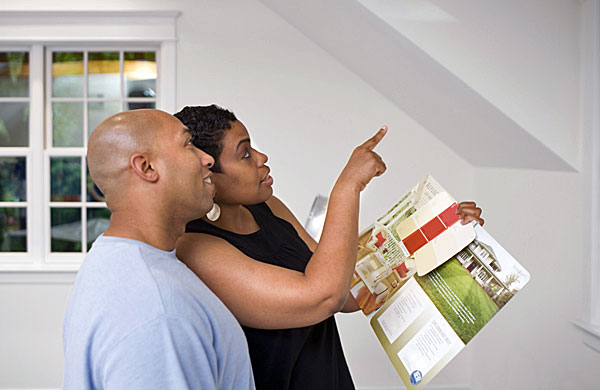Connect With Us:

With spring comes the desire to improve living conditions, and that means a new house, a home addition, or the most common improvement—a remodeling project. Home improvements, from a new front door or a patio to a complete rehab of a kitchen or bath—they all add up to home improvement! But where does a homeowner start when it’s time to plan a remodeling project?
We talked to Brian Oltmanns, President of Central Construction Group, Inc. in Indianapolis about the best way to plan a home improvement. According to Oltmanns, the homeowner had better be prepared to be inconvenienced during the remodeling process, especially if it’s a major project. There’s just no way around it. The contractor needs to be upfront about the inconvenience and not try to sugarcoat the problem. Having said that, he also needs to explain the ways in which his crew will try to minimize the inconvenience—cleaning up as they go, keeping dust to a minimum with dust barriers, removing or protecting furnishings during the process, and working quickly and efficiently to get the project done on time.

While some might want to approach work in stages, Oltmanns prefers to tackle a project all at once if possible. “While it may take longer and they may need to make temporary living arrangements if necessary, it is still better than going through the entire remodeling process multiple times for different areas unless absolutely necessary,” Oltmanns explains.
Homeowners often hear that they get the most ‘bang for their buck’ when they remodel kitchens and bathrooms. Oltmanns agrees with that philosophy. Home value is enhanced when kitchens and bathrooms are updated. This year, the hottest trends include white cabinets and quartz countertops. Oltmanns also stresses that ‘curb appeal’ projects can add value like new or upgraded siding, shutters, trim or a new front door. One area that’s often overlooked is the home’s entry. It gives the home’s first impression and there are lots of ways it can be enhanced for organizational and aesthetic purposes. Mud rooms and laundry rooms are often overlooked, as well.
And then there’s the issue of budget. Oldmanns says, “Budget should be addressed before the project is estimated. Communication is key, along with developing a concise plan for the project and identifying potential concern areas of cost increases. A project should always progress at a steady rate without sitting idle for an extended period of time for no reason. I always tell people in a hurry to finish that you can have a project rushed into completion very fast or you can have it finished with quality workmanship, but you cannot have both.”
Oldmanns has some tips for homeowners when it comes to selecting the right contractor. “It is best to analyze who puts in the most attention to detail in the estimating stages of the project,” he says. “Chances are, the most thorough company with a clear, concise detailed scope of work and good communication will execute those habits during your project when it is desperately needed.” If all bidding companies provide a very detailed estimate and scope of work, then all estimates will be truly and completely comparable.
In the end, of course, if all companies are comparable, Oldmanns says you just have to go with who you feel the most comfortable working with. And we have to add, sticking with a NARI member company is the surest way to be happy with the outcome of your project.



